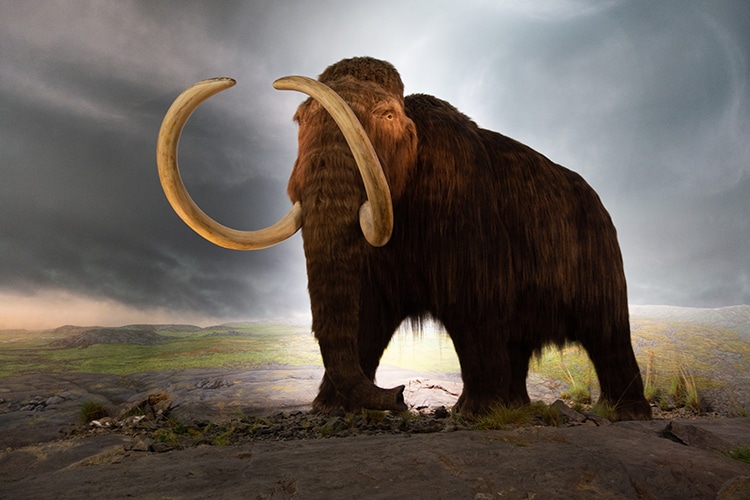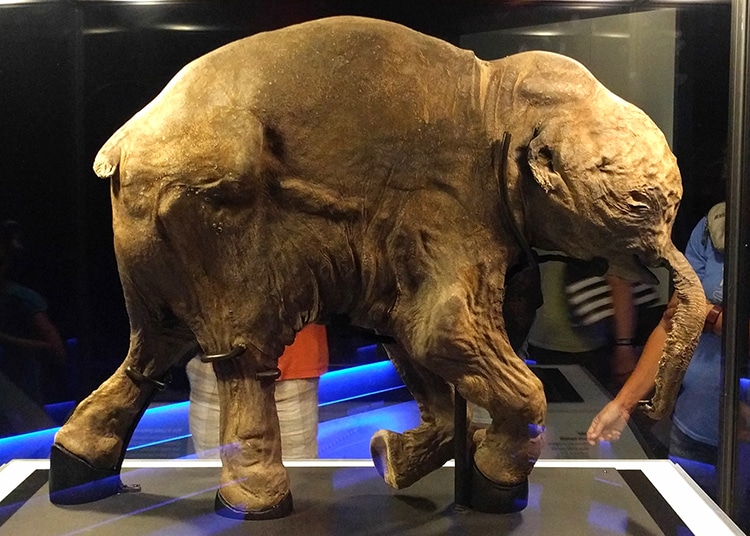The “De-Extinction” Biotech Company Is Trying to Resurrect the Woolly Mammoth
The idea of resurrecting ancient creatures has fascinated scientists and the general public. Colossal Biosciences, a pioneering biotech company, is working towards resurrecting the iconic woolly mammoth through a groundbreaking process called “de-extinction.” By leveraging modern DNA technology, Colossal aims to revive this prehistoric creature and reintroduce it into the Arctic ecosystem. Despite the ethical considerations surrounding this ambitious endeavor, the company believes that the woolly mammoth can contribute to restoring and preserving degraded ecosystems. This article delves into the scientific process behind Colossal’s mission, the potential implications of de-extinction, and the challenges associated with bringing the woolly mammoth back to life.

Photo: Thomas Quine via Wikimedia Commons, CC BY 2.0
Colossal Biosciences capitalizes on the abundance of well-preserved mammoth skeletons discovered in the Arctic permafrost to initiate the de-extinction process. These specimens, including the notable 42,000-year-old baby mammoth Lyuba, provide valuable sources of intact DNA, skin, and hair. Moreover, scientists have extracted DNA from a woolly mammoth that roamed the Earth approximately 1.2 million years ago, marking the oldest retrieved DNA. Colossal’s researchers strive to create a viable embryo by manipulating the DNA obtained from these prehistoric remains.
The woolly mammoth shares a staggering 99.6% of its DNA with the Asian elephant, a distant relative that still exists today. Leveraging this genetic similarity, Colossal plans to implant the engineered mammoth embryo into an African elephant, the larger of the elephant species. The hope is that the surrogate mother will carry the seed to term, resulting in the first woolly mammoth to roam the Earth in thousands of years.

Photo: Thomas Quine via Wikimedia Commons, CC BY 2.0
The woolly mammoth played a crucial role in maintaining the health of Arctic ecosystems before its extinction—colossal aims to restore balance and address environmental degradation by reintroducing this species. According to the company, the revival of the mammoth could positively impact Arctic ecosystems, contributing to the restoration of degraded habitats. This approach aligns with Colossal’s broader vision of bringing back species that can help revive and preserve ecosystems facing various challenges.
While resurrecting long-extinct species like the woolly mammoth seems awe-inspiring, it raises profound ethical and environmental concerns—lessons from fictional narratives like Jurassic Park caution against hasty and uncontrolled attempts at de-extinction. As technology advances, defining ethical boundaries and engaging in thoughtful discussions about the potential implications becomes imperative. Skepticism exists among some scientists regarding the feasibility of Colossal Biosciences’ mission, particularly the successful creation of a live mammoth offspring. Nevertheless, the technology and research behind de-extinction warrant further exploration and deliberation.
In a world that is evolving quickly, where climate change and habitat degradation threaten numerous species, more than the pace of natural evolution may be required for survival. Dr. Beth Shapiro from the University of California, Santa Cruz, an expert unaffiliated with Colossal Biosciences, emphasizes the need for human intervention to safeguard endangered species. The accelerated timeline provided by de-extinction technologies offers a potential solution for species facing imminent extinction.

Photo: shakko via Wikimedia Commons, CC BY-SA 3.0
Colossal Biosciences’ ambitious undertaking to revive the woolly mammoth through de-extinction showcases the power of modern DNA technology. By leveraging the genetic similarities between the woolly mammoth and the Asian elephant, the company aims to bring this iconic species back to life. While ethical and environmental concerns persist, the potential benefits of reintroducing the woolly mammoth to degraded ecosystems cannot be ignored. As scientific advancements continue, society must engage in thoughtful discussions to ensure responsible and informed decision-making regarding the revival of extinct species. Ultimately, the journey toward de-extinction represents a significant step in our understanding of genetic engineering and its potential implications for the future of biodiversity.
Related Articles:
“Heartbreaking Yet Beautiful: The Last Photos of the ‘Elephant Queen’ Before Her Demise”
A Pregnant Elephant Who Sadly Died From a Firecracker-Filled Pineapple Is Honored by Artists